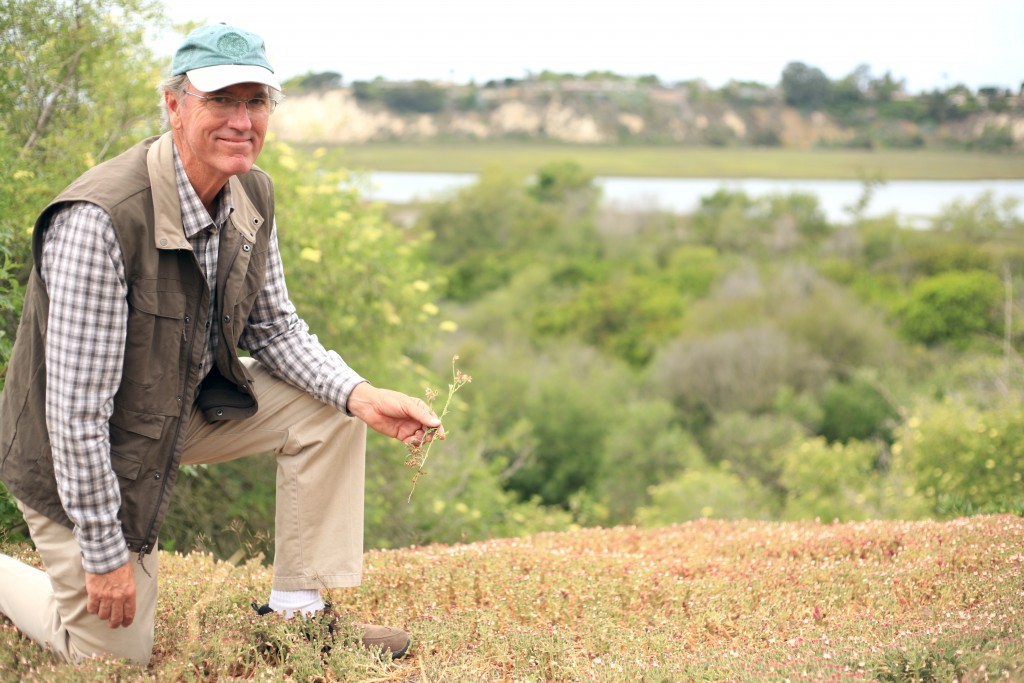
— Photo by Sara Hall ©
An invader was recently discovered in the Back Bay.
An infestation of the invasive plant volutaria tubuliflora, also known as Moroccan Knapweed, occurred between the trail and the fire road in the Big Canyon area of Upper Newport Bay.
Although it may look harmless, Moroccan Knapweed could push out native flora and disrupt the entire ecosystem in the bay.
Luckily, it was discovered early and has been removed – for now. It’s going to take years to completely eradicate the species.
When an invasive plant shows up in an area where they didn’t co-evolve with everything else, they often become the dominant species because they don’t have any natural predator or controls, explained Ron Vanderhoff of the Orange County chapter of California Native Plant Society.
“It basically crowds out the natural, native plants that are present,” he said.
Plants are the building blocks in the system, Vanderhoff said, if they’re healthy, the environment is healthy, and the other way around. Everything is connected in the ecosystem.
“You can’t pull out one thing without affecting everything else,” Vanderhoff said. “And that’s what invasive plants do, they disrupt the whole system.”
The Moroccan Knapweed could do just that.
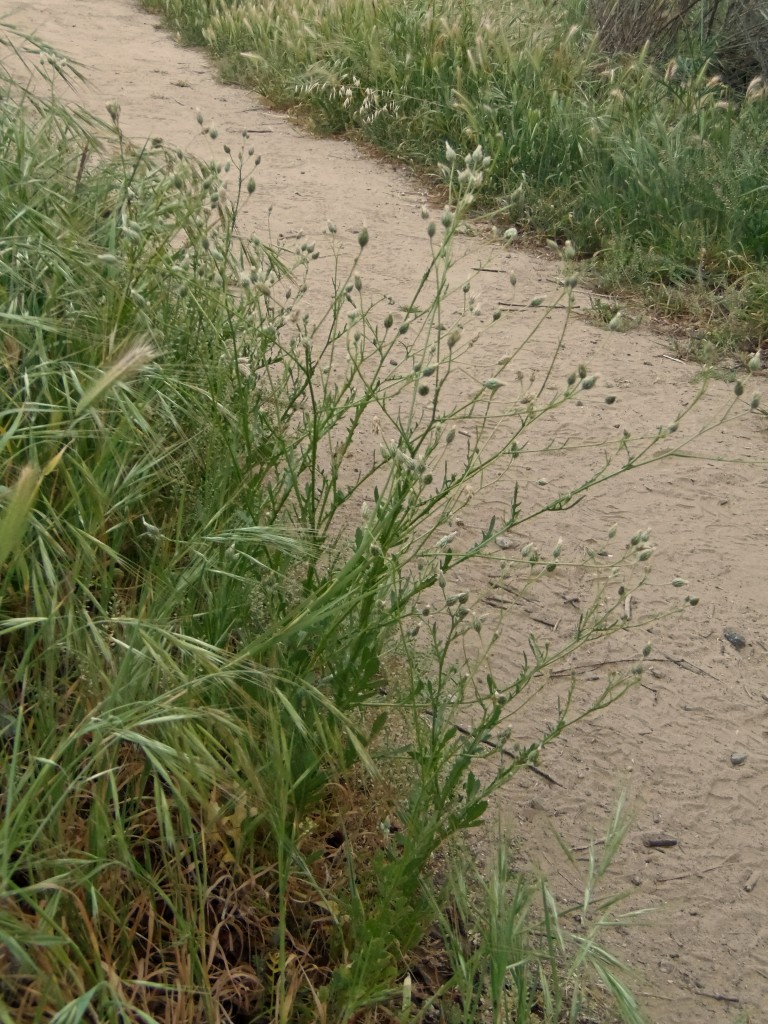
— Photo by Ron Vanderhoff ©
“If this plant got established and you came back in 10 years the bay would be a different environment,” Vanderhoff said. “If we don’t take care of it now…This little treasure (Back Bay)… that could be disrupted.”
When an invasive plant moves into an area it starts colonizing the area, seeding and trying to reproduce.
And the Moroccan Knapweed is a prolific seeder.
“It seeds very aggressively,” Vanderhoff said.
This annual herb is a member of the Sunflower Family (Asteraceae) and in one season can grow quickly to shrub size and release approximately 2,500 seeds.
This information is based off of experience from the only other Moroccan Knapweed population known in the U.S., a large number near Borrego Springs in Anza-Borrego State Park northeast of San Diego.
A single plant was discovered in 2010 in Anza-Borrego, since then more than 10,000 have been found in that area despite being aggressively managed.
Vanderhoff helped create a sense of urgency with the Moroccan Knapweed, which is important after seeing how quickly the plants grew in Anza-Borrego, said Dr. Riley Pratt, the Project Manager and Restoration Ecologist for The Irvine Ranch Conservancy, which manages the land in Upper Newport Bay where the weed was found.
“That alarmed people,” Pratt said, “it has a lot of veracity to reproduce.”
Although it’s not clear that it would explode into huge problem in the Back Bay, being such a different environment, but considering how quickly it grew in Anza-Borrego, they didn’t want to take any chances, Pratt noted.
They hope to have nipped it in the bud in Newport Beach before it had the chance to grow out of control like in Anza-Borrego, Pratt said.
It’s unknown how much damage the Moroccan Knapweed could cause, Pratt said.
“We’re dealing with a new plant that we don’t know a lot about,” Vanderhoff said. “We’re going to learn as we go.”
“It’s a bit of a mystery,” Pratt said.
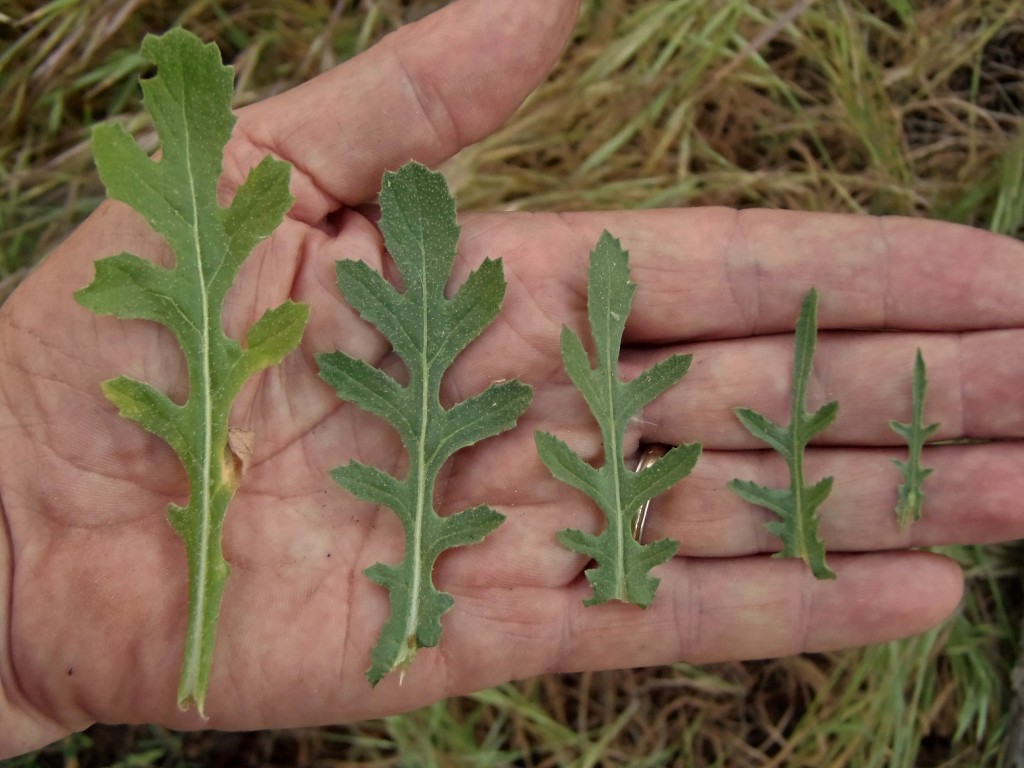
— Photo by Ron Vanderhoff ©
The first sighting of the Moroccan Knapweed in bay was by Huntington Beach resident Barbara Boethling.
While on the monthly Sea & Sage Audubon bird walk with Mark Kincheloe at Back Bay, Boethling noticed an unfamiliar plant on the trail and stopped to photograph it.
“I tried to ID it at home, but could only narrow it down to some type of knapweed,” she said.
She knew Vanderhoff could help, so she emailed her photos to him.
“The rest is history,” Boethling said. “It was kind of a lucky find.”
She saw it, noted that it was unusual and went the extra step to report it, Pratt said.
“That was critical,” he noted.
Vanderhoff is part of the OC CNPS’ newly created Emergent Invasive Plant Management Program, which aims to identify, monitor and control invasive species with early detection and rapid response.
They worked with the city of Newport Beach and Irvine Ranch Conservancy to remove the plants.
After the first discovery, the plant had been identified and removed within two weeks.
The plants had to be pulled out, double bagged and buried in a sanitary landfill. There were about 3,600 plants covering less than half an acre.
Based on how many plants were found, it’s been in the Back Bay, under the radar for several years, Pratt said.
“It was a good example of how multiple groups and partners work together to take care of this plant,” Pratt said.
They listed it as a high priority invasive plant, Vanderhoff explained.
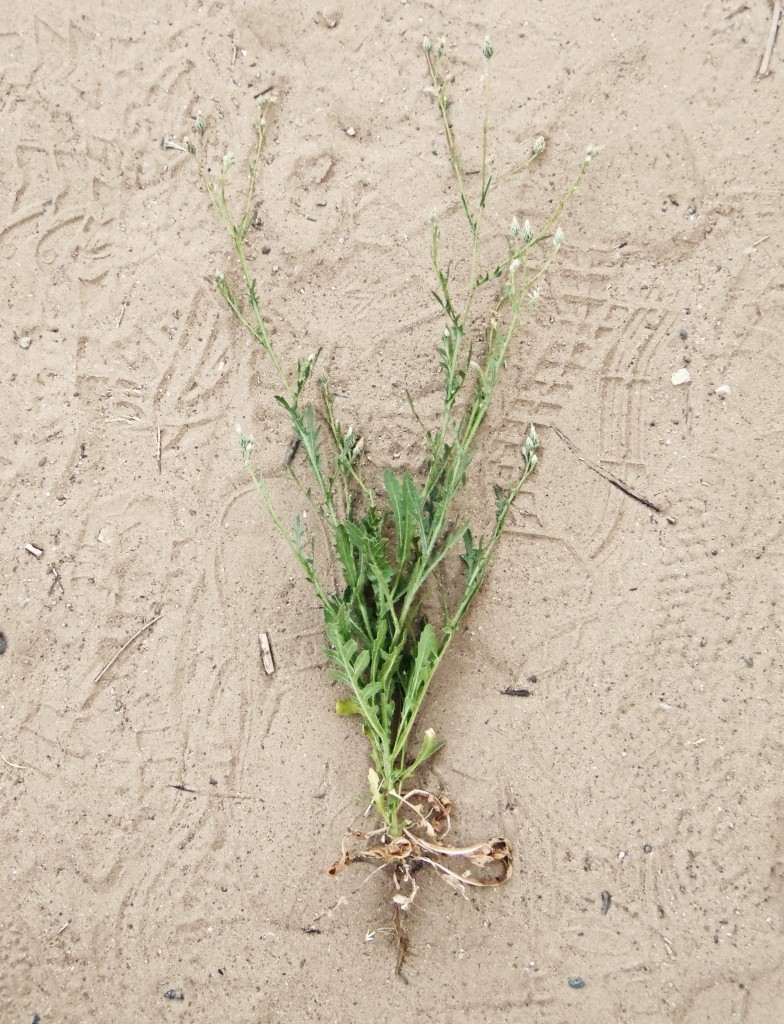
— Photo by Ron Vanderhoff ©
This means it’s a new and small enough infestation that it can still be eradicated and has a high probability for causing serious environmental disruption.
They will germinate in October-November with the winter rains and will have to be removed again sometime between January and March, Pratt explained.
They’ll revisit the location where they were found and go from there. Pratt expects to see a few thousand plants.
They need to be removed before they set more seed, Vanderhoff added.
This is going to be an ongoing issue for five to 10 years, he said, but hopefully they caught it early enough.
“I’m confident we’ll be able to manage it in the future,” Pratt noted.
The significance that the plant was found both in the desert in Anza-Borrego and in coastal Newport Beach means that it can grow well in very different habitats.
“Apparently, it’s adaptable to, possibly, a great deal of environments,” Vanderhoff said. “And those are the worst weeds.”
They could be in the foothills, mountains or anywhere in between.
It has a wide range of environmental tolerance, Pratt said.
It’s only speculation how the Moroccan Knapweed seed was brought to Newport, but it could have been on a dog, on a hiker’s shoelace, caught in a car, or a number of other ways.
More likely than not it’s from somebody who visited Anza-Borrego at some point in the last four years and inadvertently brought seed back, rather than directly from it‘s native land overseas, Vanderhoff noted.
“But it’s always going to be speculation,” he said.
Although the plants have now been removed from the area, there is a possibility that someone may have accidentally picked up a seed prior to the removal and transported it somewhere else.
“There’s a big chance right now that this plant may be growing somewhere else,” Vanderhoff said. “That’s another unknown.”
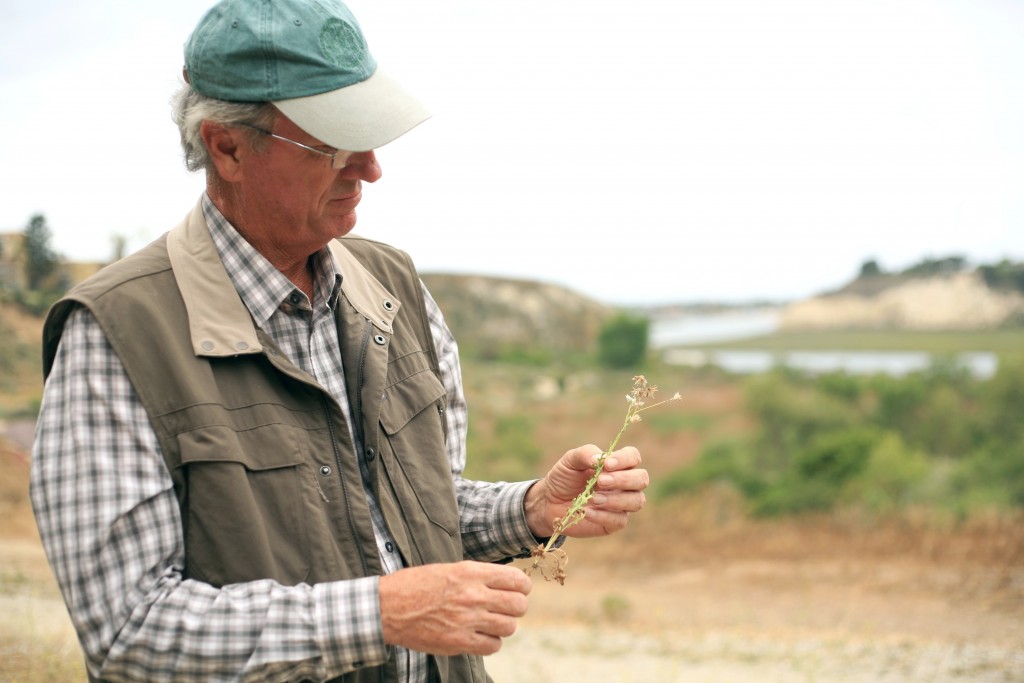
— Photo by Sara Hall ©
To fight that challenge, the group is working on early detection. This involves educating the public about plant life in their local environment and warning them about some of the high priority invasive plants.
As residents are out walking they might notice something that looks unfamiliar, take some photos and send them to OC CNPS for identification.
That is exactly how the Moroccan Knapweed was discovered.
“This is the perfect way it’s supposed to work,” Vanderhoff said.
Boethling, a self-taught enthusiast, said she started learning just by getting out and walking around.
“The more you go out the more familiar you are with what you see,” she said.
And something will stand out if it’s unfamiliar.
“Local botany is a love of mine,” Boethling said.
She encouraged others to familiarize themselves with the plants that are typically in their area. There are a lot of good resources online, she added.
“It doesn’t have to be in great detail,” she said. But try to “learn the basics.”
Vanderhoff and Pratt shared a few tips to help contain plants and not inadvertently spread an invasive species: Learn the local plant life, pick seeds off socks and shoes after a walk while still at the area, stay on the trail, thoroughly brush dogs before leaving area; and don’t bring firewood back home – “burn it where you buy it” or just leave it there.
The OC CNPS is also trying to educate homeowners on what they’re planting in their garden. An invasive planted in a garden can easily spread past the fences of the home, Vanderhoff said.
“We’re trying to deal with (invasive plants) on both ends,” Vanderhoff said, “the garden source of introductions and the unknown introductions.”
A little bit of effort now can solve a lot of potential problems in the future, Vanderhoff said.
For more information, visit occnps.org and irconservancy.org.
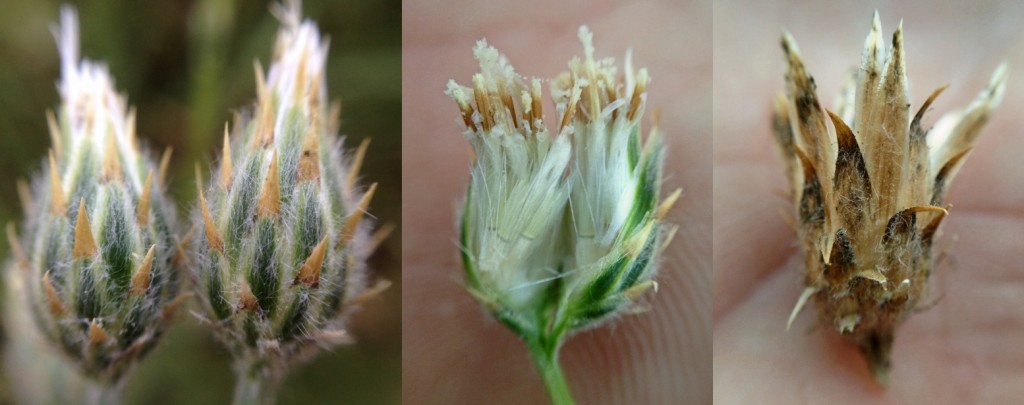
— Photos by Ron Vanderhoff ©




